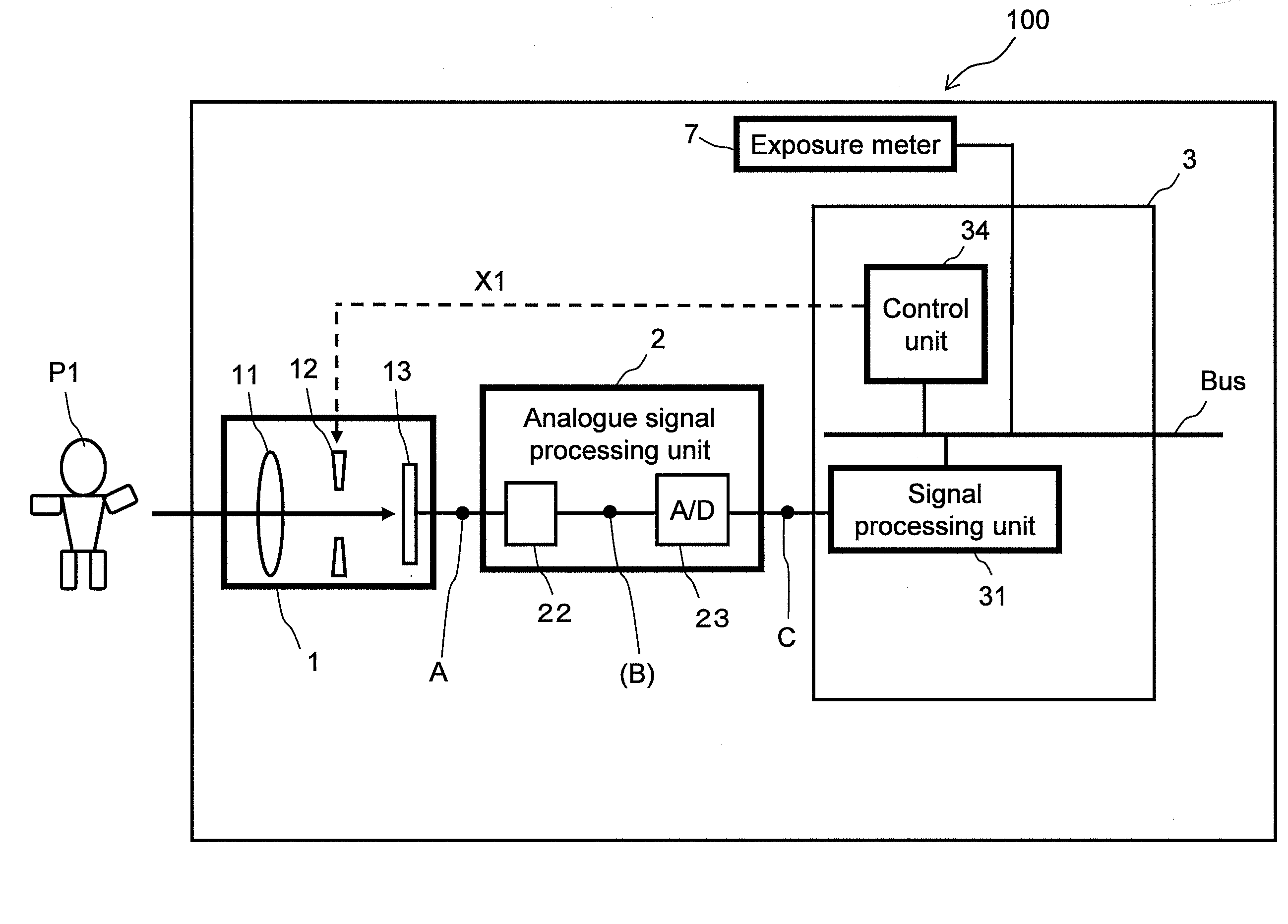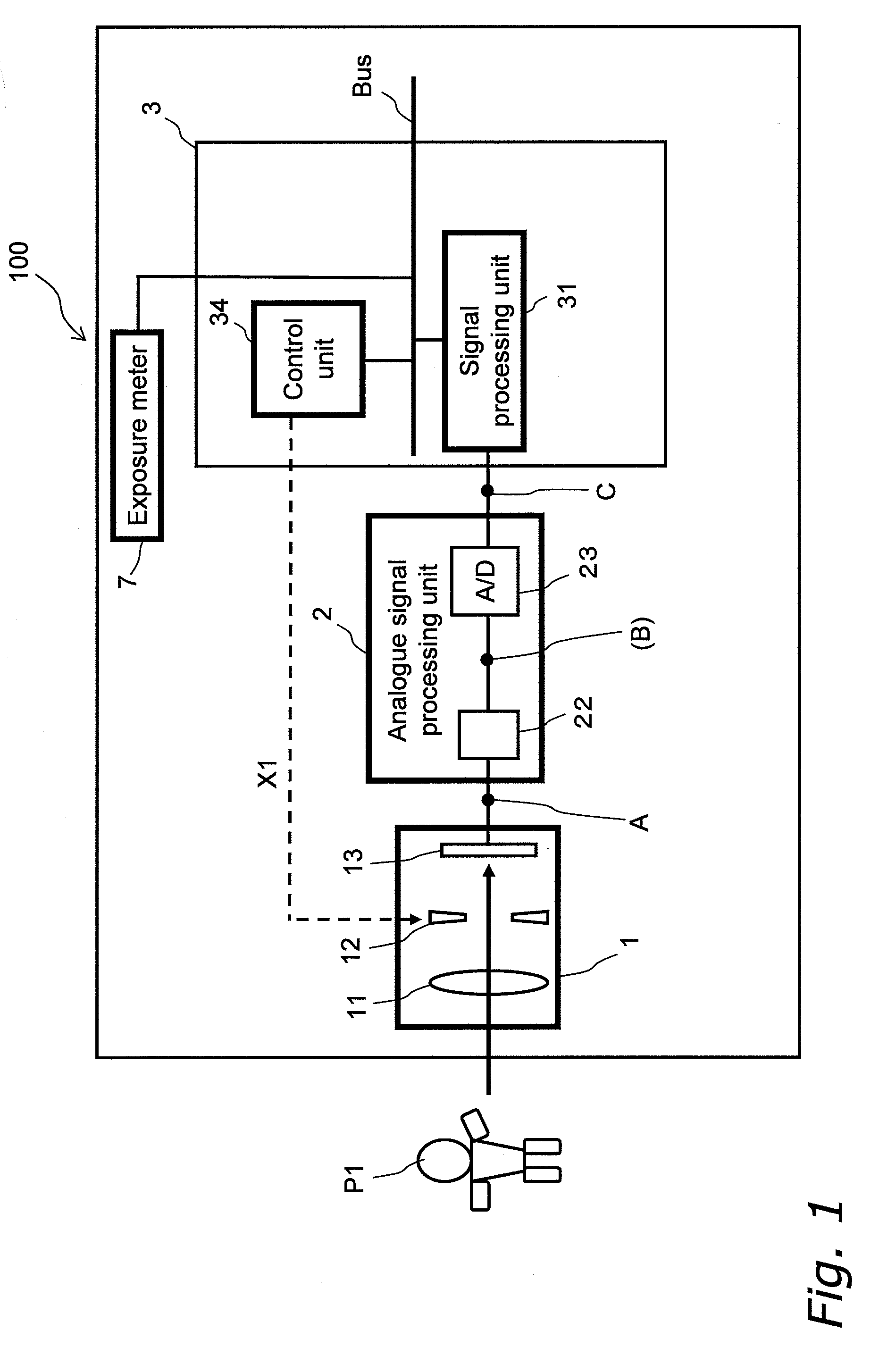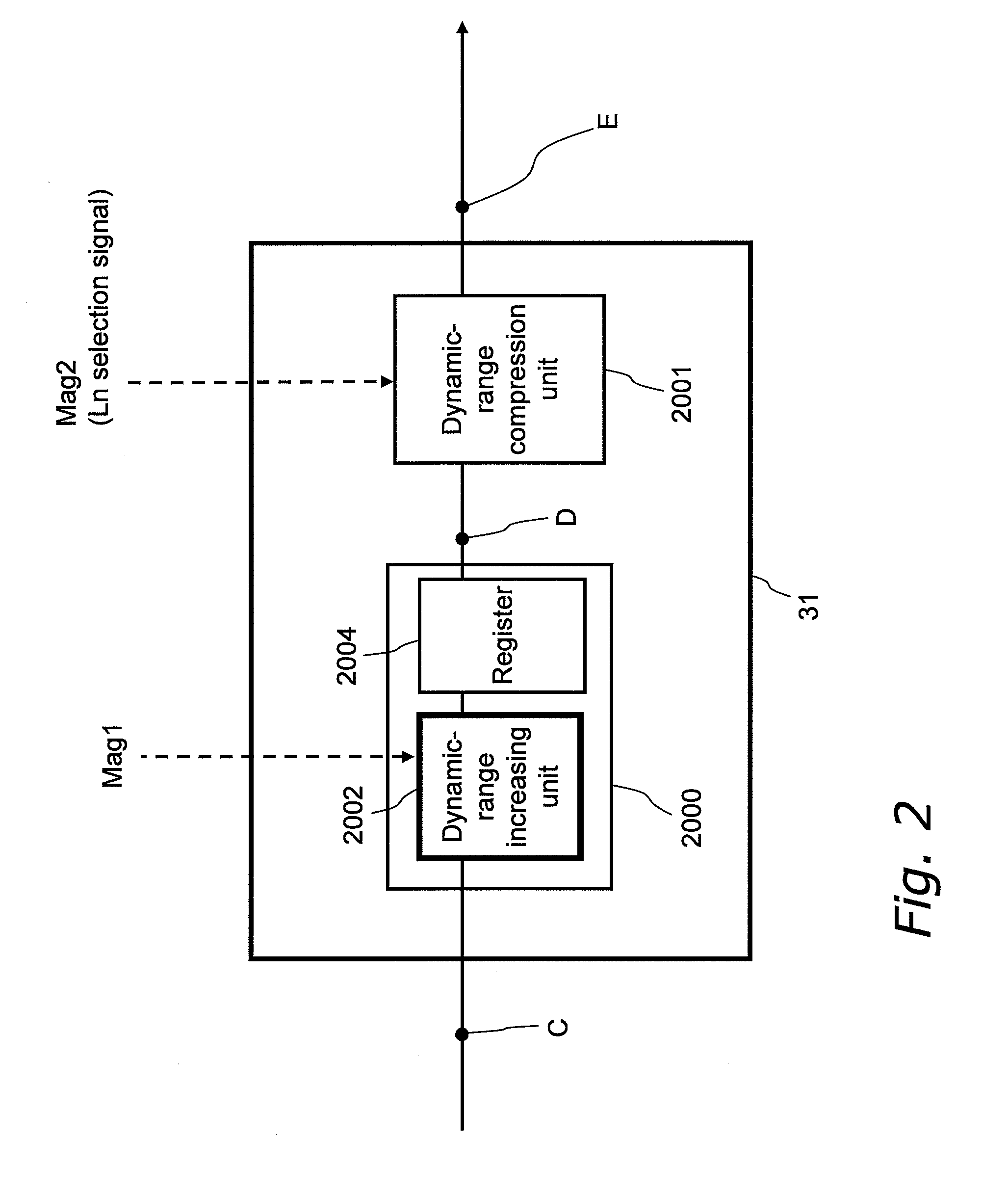Imaging apparatus, imaging method, integrated circuit, and storage medium
a technology which is applied in the field of imaging apparatus and integrated circuit, can solve the problems of slowing down the shutter speed and obtaining a sufficient amount of light, and increasing the depth of field, so as to achieve large luminance and high luminance
- Summary
- Abstract
- Description
- Claims
- Application Information
AI Technical Summary
Benefits of technology
Problems solved by technology
Method used
Image
Examples
first embodiment
1.1 Structure of the Imaging Apparatus
[0130]FIG. 1 shows the structure of an imaging apparatus 100.
[0131]The imaging apparatus 100 includes an optical system 1, an analogue signal processing unit 2, a digital signal processing unit 3, and an exposure meter 7.
[0132]The optical system 1 includes an imaging lens 11, an aperture 12, and an imaging unit 13. The imaging lens 11 focuses light from a subject P1. The aperture 12 adjusts the amount of reflection light from the subject P1, which has been focused through the imaging lens 11. The imaging unit 13 outputs an image signal A according to the adjusted light amount (light amount adjusted by the aperture 12) and the light accumulation time.
[0133]The analogue signal processing unit 2 includes a correlated double sampling (CDS) circuit 21 and an analogue-to-digital (A / D) converter 23.
[0134]The A / D converter 23 converts analogue image (video) signals to 12-bit digital image (video) signals (signals C) corresponding to pixels having levels...
first modification
[0174]The first embodiment describes the case in which the dynamic-range compression conversion characteristics L0 to Lmax are selected according to the preset aperture amount (exposure light amount). Alternatively, the dynamic-range compression unit 2001 may select the dynamic-range compression characteristic Ln according to a maximum value of signals D corresponding to the entire image (first modification).
[0175]FIG. 8 shows the structure of a signal processing unit 31′ according to the first modification. In FIG. 8, the processing units that are the same as the units described in the first embodiment are given the same reference numerals as those components. The signal processing unit 31′ according to the first modification differs from the signal processing unit 31 shown in FIG. 2 only in its parameter determination unit 800.
[0176]The parameter determination unit 800 includes a peak detection unit 802.
[0177]The peak detection unit 802 receives signals D corresponding to one imag...
second modification
[0185]Alternatively, the aperture amount of the aperture 12 and the dynamic range increase 10 ratio may be set according to the peak value of the entire image that is detected by the parameter determination unit 800 of the first modification (second modification).
[0186]The structure according to the first modification uses the aperture value of the aperture 12 preset by a separate means (for example, ¼). In that case, signals A corresponding to the brightest portion of the scene 201 stored in the imaging unit 13 (output from the imaging unit 13) do not have a value as high as the maximum dynamic range of 150% (signals only have a value of up to 125%). In this case, digital signals C obtained for the scene at the imaging timing do not have values as high as the maximum input dynamic range (quantization resolution) of the A / D conversion. Thus, the structure according to the first modification fails to effectively use the maximum input dynamic range (quantization resolution).
[0187]The ...
PUM
 Login to View More
Login to View More Abstract
Description
Claims
Application Information
 Login to View More
Login to View More - R&D
- Intellectual Property
- Life Sciences
- Materials
- Tech Scout
- Unparalleled Data Quality
- Higher Quality Content
- 60% Fewer Hallucinations
Browse by: Latest US Patents, China's latest patents, Technical Efficacy Thesaurus, Application Domain, Technology Topic, Popular Technical Reports.
© 2025 PatSnap. All rights reserved.Legal|Privacy policy|Modern Slavery Act Transparency Statement|Sitemap|About US| Contact US: help@patsnap.com



